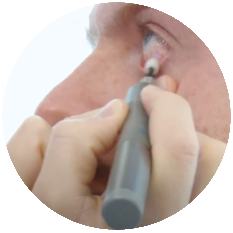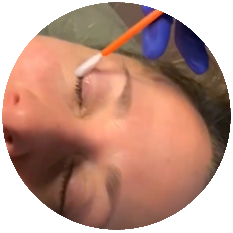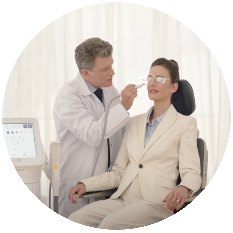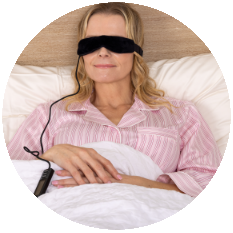Amniotic Membrane Transplant
What is an amniotic membrane transplant?
The amniotic membrane comes from the inner layer of the placental bag that surrounds the baby when growing in the womb. It is collected from women undergoing a planned caesarean section, who have given full voluntary informed consent. The tissue is washed and preserved into a thin, dry sheet that can be applied to your eye with a special contact lens. Amniotic membrane transplantation is a treatment that can help stabilise the eye and reduce pain.
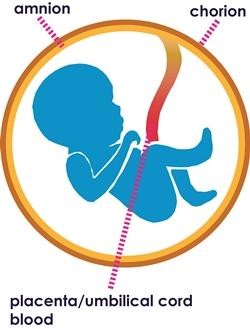
Why should I have this treatment?
In dry eye disease, the cornea can become denuded from lack of sufficient tears which supply nutrients to the eye. If this is severe enough, the clinician may decide to use an amniotic membrane, which has been shown to augment the recovery of the corneal epithelium.
The aim of treatment is to help stabilise your eye and reduce your sensation of pain. The treatment will also prevent the worsening of inflammation, which is the redness at your eyes surface.
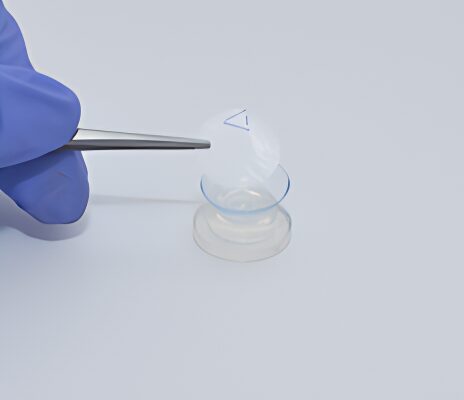
How does an Amniotic Membrane Transplant work?
We use NuVision’s Omnigen amniotic membrane, which is applied to the front of your eye using their OmniLenz special bandage contact lens. Your clinician will use an anaesthetic eye drop to numb the front of your eye before applying the treatment to reduce discomfort.
Once the contact lens is on the eye, you may be able to feel it in place. This is nothing to worry about. The decision on how long the amniotic membrane needs to stay on your eye will be determined by your clinician (typically up to one week).
The membrane contains substances which help cells divide and grow. It also contains cells which have the ability to change themselves into viable epithelial cells which can help restore the lost corneal epithelium. Over the duration that it is in your eye, the membrane will slowly dissolve as it does its work.
Are there any risks or side effects?
The amniotic membrane used in this procedure is processed in a way to reduce the risk of any infection to the patient. All donors are tested for a range of infectious diseases. However, with any tissue transplant, there is still a small chance of viral infection as emerging viruses and prions cannot be tested for. However, although it should be considered, do not worry. The risk of infection is low.
The amniotic membrane is cleaned in a solution of antibiotics and antimycotics during the preparation process. If you have any known allergies, you should inform your clinician before treatment.
Contact lens wear can, rarely, cause complications when worn overnight, as they are in this procedure. If your eye becomes more painful or your vision is further reduced, contact the clinical staff in control of your care.
What are the success rates?
As this is a human tissue transplant and a relatively new treatment, exact statistics are not yet available. However, clinical studies have shown significant improvements in patients treated with amniotic membrane.
Who will carry out my treatment?
Your Dry Eyes Clinic clinician will carry out your treatment. They will apply the lens and ask you to return after a set period to have the treatment removed from your eye.
Will I see a result immediately?
It is expected that you will see a benefit within ~14-days of treatment with the effects improving over time.
How long does the improvement in symptoms last?
For most patients, effects last ~6-months. Some people may have an improvement for shorter or longer than this. It may be that you will require bi-annual treatment with amniotic membrane to maintain the improvement in your symptoms.
Can anyone have an Amniotic Membrane Transplant?
Patients who are not able to wear contact lenses due to the shape of the front of their eye may not be compatible with this treatment. If you are a heavy blinker or are prone to rubbing your eye, speak to your clinician about whether you are able to have this treatment.
If you use any eye drops, your clinician will let you know if you need to change your regime whilst the treatment is in place. Your clinician will advise if you can drive during the treatment. If you normally wear contact lenses to correct your vision, you will need to wear glasses during your treatment.





